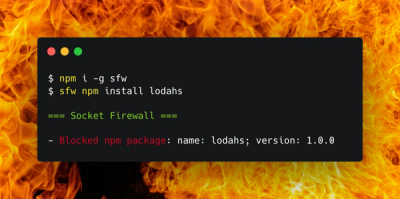
Security News
Package Maintainers Call for Improvements to GitHub’s New npm Security Plan
Maintainers back GitHub’s npm security overhaul but raise concerns about CI/CD workflows, enterprise support, and token management.
CLI for Frint
With npm:
$ npm install -g frint-cli
From your Terminal:
$ frint
Will list all the commands available to you.
initScaffolds a new FrintJS application in the current directory:
$ mkdir my-directory && cd my-directory
$ frint init
To scaffold a certain example, as available in the repository here:
$ frint init --example kitchensink
newScaffolds a new FrintJS application in the current directory:
$ mkdir my-directory && cd my-directory
$ frint new
Scaffolds a new FrintJS application in the specified directory:
$ frint new my-directory
To scaffold a certain example, as available in the repository here:
$ frint new my-directory --example kitchensink
It is also possible to scaffold an example from an arbitrary repository:
$ frint new my-directory --example frintjs/frint-vue/tree/master/examples/basic
versionShows the current version of frint-cli:
$ frint version
helpShows help text of commands:
$ frint help init
$ frint help help
You can install frint-cli plugins just like a regular npm package in your project:
$ npm install --save frint-cli-hello
.frintrcTo register this new CLI plugin, update your .frintrc file in your project's root directory:
{
"plugins": [
"frint-cli-hello",
"./some-relative/path"
]
}
Now the frint-cli-hello plugin can be run as:
$ frint hello
world
Building a plugin for frint-cli, is just like developing a regular FrintJS app.
// frint-cli-hello/index.js
const createApp = require('frint').createApp;
module.exports = createApp({
name: 'hello', // this is the subcommand name in `$ frint hello`
providers: [
{
name: 'summary',
useValue: 'Short help text',
},
{
name: 'description',
useValue: 'Long help text',
},
{
name: 'execute',
useFactory: function () {
return function () { // this returned function will be excuted
console.log('world!');
}
},
}
],
});
It is required that you have a provider called execute, which returns a function. This function will then be called when the subcommand is run.
To register multiple commands from the same plugin, you can export an array of App classes.
The summary and description is used when the user is trying to get help text by running:
$ frint help hello
console (Console): The same console available in NodeJS globallypwd (String): Current working directoryconfig (Object): As available in .frintrc fileparams (Object): An yargs compatible object after parsing CLI optionsfs (Object): Node's fs moduleFAQs
CLI for Frint
We found that frint-cli demonstrated a not healthy version release cadence and project activity because the last version was released a year ago. It has 8 open source maintainers collaborating on the project.
Did you know?

Socket for GitHub automatically highlights issues in each pull request and monitors the health of all your open source dependencies. Discover the contents of your packages and block harmful activity before you install or update your dependencies.

Security News
Maintainers back GitHub’s npm security overhaul but raise concerns about CI/CD workflows, enterprise support, and token management.

Product
Socket Firewall is a free tool that blocks malicious packages at install time, giving developers proactive protection against rising supply chain attacks.

Research
Socket uncovers malicious Rust crates impersonating fast_log to steal Solana and Ethereum wallet keys from source code.